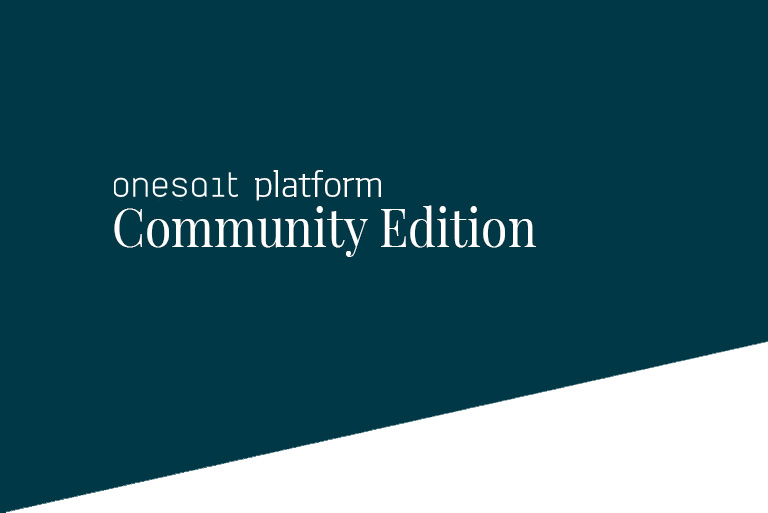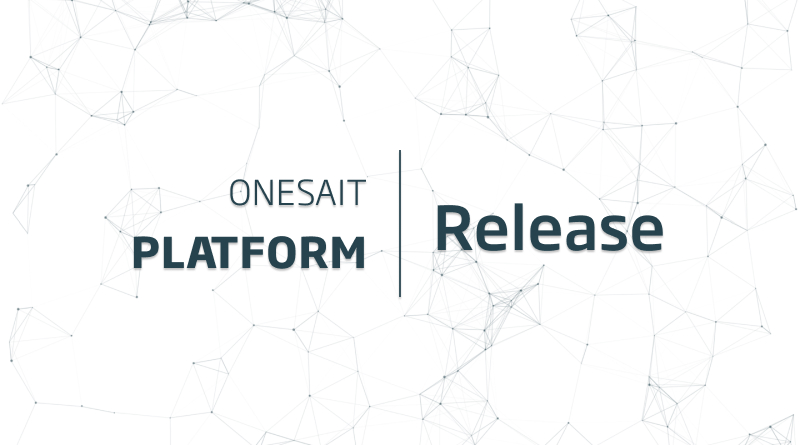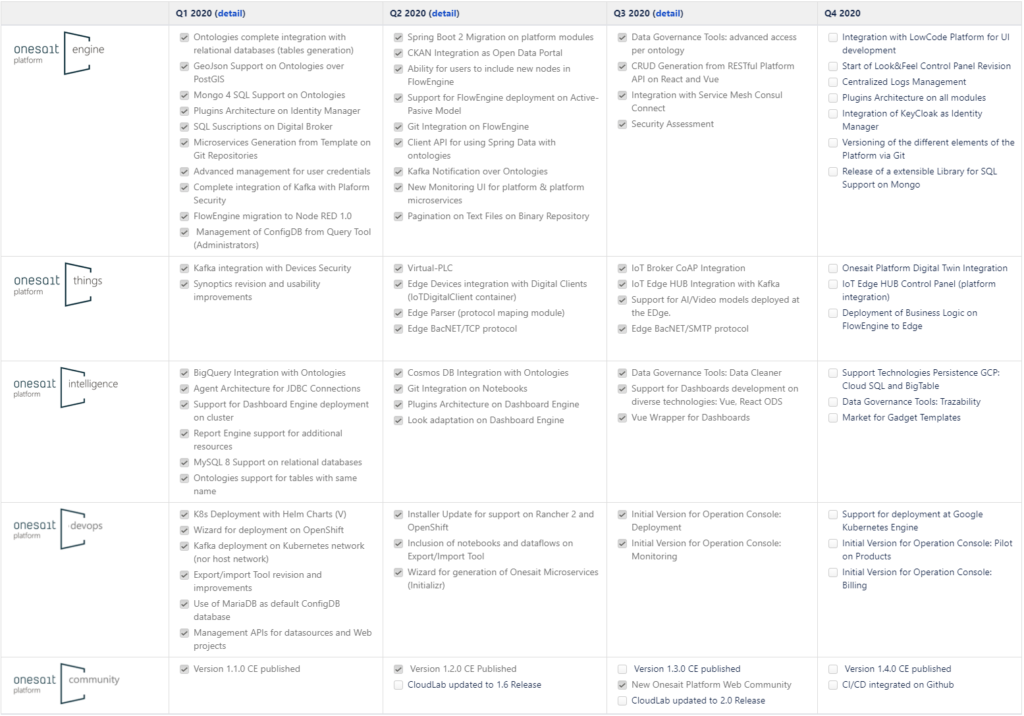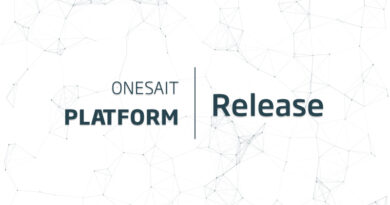Onesait Platform Release 2.2.0-hyperblast
After a quarter of hard work, last October 16th we introduce the next iteration of the Onesait Platform; version 2.2.0, which we have decided to nominate as «hyperblast»,, following our established version policy.
We continue to advance in our roadmap of releases, which we show you below in case you want to see our achievements and what’s next for us.
What is new about this new version? Well, here you have.
Engine
In this version we support the development of applications and microservices, meaning that the Platform offers a centralised web console supporting the administration, configuration and development of all types of applications, integrating application creation, their deployment on the CaaS infrastructure, API-fication, visualisation, etc.
In this version, in addition to multiple improvements and corrections, we have incorporated the following features:
Default deployment on MongoDB 4.4, and a new SQL engine
From now on, the new SQL Engine is used by default. It is based on Mongo versions 4.x published in version 2.0.

Ontology Attribute-Level Profiling
In addition to the Data Governance capabilities, the possibility of establishing personalised permissions to access the data of an ontology at the Role or User level is also available, allowing, for instance, to specify that a certain role only has access to the data stored in an ontology whose «state» attribute is «Published», or whose «region» attribute is «City centre», so that the Platform itself will be in charge of transparently filtering the queries made on that ontology.

You can see how this new capacity works in this entry of our Development Portal: Ontology attribute level profiling.
Support for microservice deployment in OpenShift
In addition to the functionality that supports the Development of Microservices, we have added the feature to deploy those in OpenShift.

Thus, a Product using OpenShift as its Kubernetes cluster will be able to deploy its microservice isolating itself from the complexity of the later.

Interested in knowing how to deploy the Operations Console we are talking about with this functionality? We will tell you in the following tutorial: Deploying microservices in OpenShift.
FlowEngine node to use Platform management APIs
With this new node, the REST APIs for managing the platform can be easily handled from the FlowEngine. This will allow you to orchestrate them to, for example, trigger the process of creating an Ontology or API based on a call to the FlowEngine.

We have generated a guide that explains the use of the node: Node to handle Platform management APIS REST.
Improvements in the integration between DataFlow and FlowEngine
Since many of you use FlowEngine to orchestrate invocations to different DataFlows, we have improved the component that allows that by enabling timeout and multiple state control.

This is explained in this guide: How to control the response of a DataFlow from FlowEngine?
Several improvements in the security area
As a result of the requests made by different products and the security assessment carried out during this quarter, several improvements in this area have been incorporated into the platform, among which we would like to highlight:
- SSO support with Microsoft Teams in Identity Manager: so that an application built on the Platform, or the Platform itself, can easily be authenticated with Microsoft Teams’ SSO.

- Certificate authentication support in Identity Manager: so that any user with a certificate configured in the Platform can access it.
- Passwords encryption using SHA-3: increasing security with respect to the SHA-256 encryption that has been used until now.
- Security audit of the code: through the Spotbugs integrated into the team’s development IDE and its integration into SonarQube, a process of reviewing the quality of the code in this area has been carried out during this period.
Intelligence
Here we have focused on supporting the development of systems and applications that use the Platform’s Intelligence capabilities, whether that be in the analytical part, Machine Learning, Artificial Intelligence, ingest, etc.
We have great news in this distribution, as you will see:
New Data Cleaner component
Continuing with the incorporation of Data Governance capabilities in the Platform, this new module has been included to allow the loading of data in different formats (XLX, CSV, XML, JSON) from the computer, the Internet or the Platform itself (through a SQL query), and to work with them to clean, improve, restructure or reconcile the data before loading them into the Platform as an Ontology.

We have created a new section for this component within the Documentation/Component Guides section: DataCleaner Guides.
New improvements in the Dashboard engine
Among which we find the creation of Gadgets in AngularJS, VueJS and React, inline rendering of the Gadget as it is created, inline inclusion of header-libs, clone templates (so that when these templates are modified, all their clones are updated) and many more:

We tell you all the news in the Development Portal.
Vue component to natively use Dashboards
Until now, to integrate the Dashboards into other web applications, the easiest way was to use the provided iFrame support. From this version (and also included in version 2.1), a Vue wrapper component for the Dashboards has been created with a complete API to work with the Dashboards (send events, filters, etc.).

To understand how to use this Vue component, we have created a complete guide: How to include Dashboards in your Vue App? (Vue Wrapper Integration)
Para comprender bien el uso de este componente Vue hemos creado
Things
About this, we have focused on supporting the development of IoT systems, both in the Cloud and Edge environments.
In this quarter we have made progress in the following points:
IoT CoAP Integration
By replacing IoT Broker technology with EMQx, it is now possible to use CoAP clients for communication with IoT/Edge Hub, with the advantages that such a lightweight protocol provides.
EMQx implements the tools for partial CoAP/MQTT mapping and Things’ information processingin the latter format. The connector allows security with DTLS.

You can find more details about the standard use from client in its GitHub: emqx-coap.
IoT Edge HUB with Digital Client (Kafka)
We already have available the bridge component that allows to concentrate all the acquisition information (device2cloud) from a set of devices associated to a project, then process them with a single topic. All ingest messages can be inserted into a Kafka server or through a Digital Client that uses this same transport.
Support for IA/Video models deployed at the Edge
Intel’s OpenVINO® (R5) packages are also available for installation on Edge Devices that will deploy IA processing models.

Additionally, the application architecture has been standardised for use with these using Python 3.5 in containers, providing basic examples of people and face detection. These model containers capture the stream in several formats, decompose it into its frames, apply the optimised model (TPU, GPU, CPU or FPGA) and return a stream with zones of interest and the detection metadata.
Edge BAcNET/SMTP
Another feature that is already available is the use of BacNET over RS485 serial port with MSTP. All functionalities available for TCP [GET/Status Devices, POST /config/signals] are available for this protocol, including transformation to MQTT.

DevOps
Within this category we include all the tools that help in the Platform’s Development and Operation.
In this quarter we have focused on a new tool that we believe will be very useful for the products and organizations that adopt the Platform as their Corporate Digital Platform.
Operation Console initial version
With this first release of the tool, we intend to help the teams that build their solution on the Onesait Platform to manage it easily and without any need for prior knowledge of their technologies.
Thus, thanks to this tool, the user can:
- Carry out the deployment of the Platform and of the services built on it.

- Monitor the Platform and its services.

To document all this, we have created a new section in the Development Portal: Operation Console.
You can also have a look at the capabilities in its startup guide: A look at the Operation Console, or read its user guide: Operation Console user guide.
Onesait Platform Community
Last but not least, in this line of work we contemplate all the tasks related to the Platform Community, of which the Onesait Platform Open Source version, as well as the Platform’s different communication channels.
With regard to the strategy set for 2020 on the Community’s lines, during this quarter (taking into account the summer holidays) we have achieved:
A new Onesait Platform Community space
from which you have direct access to the Platform’s different channels and media.

You can access it from here: Onesait Platform Community Space.
Community Channels
We keep on working so that the different communication channels grow in content and reach more followers. Thus, this last quarter we have:
- Generated 66 new Blog entries, both in Spanish and English:

- Uploaded 15 new videos to YouTube, getting 32 new subscribers, adding a total of 22.7 hours of viewing time and more than 3,300 impressions.

- Increased the number of users and visits to our Onesait Platform CloudLab environment.

- Obtained a total of 122 clones of our Platform’s Community version, and we are followed by up to 235 developers.

Release of Onesait Platform version 1.3.0-ce
This Community version maps to the 2.1 (gradius) version of the Enterprise version

You can access this version in the Github repository: Onesait Platform Community.
So that was all; as you can see, it is quite an achievement, and we are sure that you were already waiting for many of the new features and that they will be great for your developments.
We encourage you to test the changes (there you have the CE to install it in your machines) and share your opinions with us.




